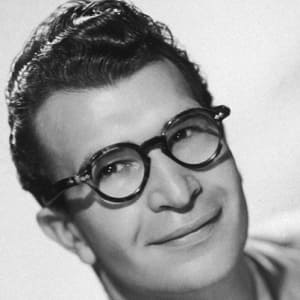
Wen Ho Lee
Wen Ho Lee is a nuclear engineer who was working at Los Alamos National Laboratory when he was accused of being a Chinese spy.
Synopsis
Wen Ho Lee joined the staff of the Los Alamos National Laboratory in Los Alamos, New Mexico, in 1978. In the late 1990s, Lee became the focus of a federal investigation aimed at uncovering the possible sale of U.S. nuclear secrets to China. He lost his job at Los Alamos and spent almost a year in jail, but 58 of 59 felony charges against Lee were eventually dropped and he was released.
Nuclear Weapons Career
Born in 1939, in Taiwan, China. After earning his master's degree and doctorate in mechanical engineering from Texas A&M University, Wen Ho Lee joined the staff of the Los Alamos National Laboratory in Los Alamos, New Mexico, in 1978. He and his wife Sylvia, who also worked at Los Alamos, have two children, Alberta and Tse Chung. In the late 1990s, Lee became the focus of a federal investigation aimed at uncovering the possible sale of U.S. nuclear secrets to China. Though he lost his job at Los Alamos and spent almost a year in jail as a result of the government’s suspicions, 58 of 59 felony charges against Lee were eventually dropped and he was released. Los Alamos, created during World War II for the purpose of building the world’s first atom bomb, is one of three national weapons labs owned by the Department of Energy and a major site of the U.S. government's nuclear weapons research. In the late 1970s, Lee began working in the laboratory's X division, which designed U.S. bombs and warheads. In his position as a midlevel scientist, Lee specialized in simulating shock waves generated by nuclear blasts using computers.
Espionage Scandal
The case against Wen Ho Lee began in 1995, when a Central Intelligence Agency (CIA) operative in Asia was approached by a Chinese source who handed over a Chinese government document claiming that the country's weapons designers had obtained highly classified and specific details of the W-88, a state of the art thermonuclear warhead that was intended for use by U.S. missile submarines. Though the document was nearly seven years old and was believed by some to be a plant by the Chinese government, the Department of Energy and the Federal Bureau of Investigation (FBI) concluded that a massive security leak had occurred at the weapons lab at Los Alamos.
The official FBI investigation began in May 1996. As one of only 12 people who had both access to the information about the W-88 (he was a member of the team that designed the trigger mechanism for the warhead) and access to Chinese officials and scientists (he had visited Beijing and had attended a seminar in Hong Kong in 1988, which corresponded with the date of the document in question), Wen Ho Lee quickly became the government's prime suspect. Lee retained his highly sensitive position at Los Alamos until March of 1999, prompting questions about inadequate security precautions at the laboratory and drawing fire from critics of the Clinton administration for failing to follow through with information about the Chinese espionage that they received as early as the summer of 1997.
The 60-year-old Lee was set to retire at the end of 1999; instead, Richardson fired him on March 8, 1999, for unrelated security violations that had been uncovered by the W-88 investigation. On December 10, 1999, Lee was arrested and charged with 59 counts of mishandling national security information. Though the charges stopped short of espionage, A brief biography of Wen Ho Lee was accused of downloading classified nuclear information from his own computer to a colleague’s non-secure computer and then onto 10 tapes, only three of which had been found in Lee’s office. He was denied bail, and spent the next eight months in solitary confinement in a federal prison.
By late August of 2000, when U.S. District Judge James A. Parker, who was hearing the case, agreed to release Lee on $1 million bail, the government’s case had virtually collapsed due to lack of solid evidence. A key FBI witness, agent Robert Messemer, admitted he had lied at Lee’s first bail hearing in December about the defendant’s alleged pattern of deception regarding his communication with Chinese officials—testimony that had largely contributed to the judge's order of solitary confinement.
On September 10, 2000, the U.S. Justice Department announced that it was dropping 58 of 59 felony charges against Lee. As part of the deal, Lee agreed to plead guilty to a single felony count of mishandling federal defense information and was sentenced with time already served. Early in the case, Lee and his lawyers had charged that he had been targeted for investigation because he was Chinese, leading critics to accuse the Energy and Justice Departments of engaging in a particularly damaging brand of racial-profiling. The settlement was seen as a major embarrassment for the government, most notably Attorney General Janet Reno and embattled Energy Secretary Bill Richardson, both of whom had pressed for Lee's firing and arrest.




